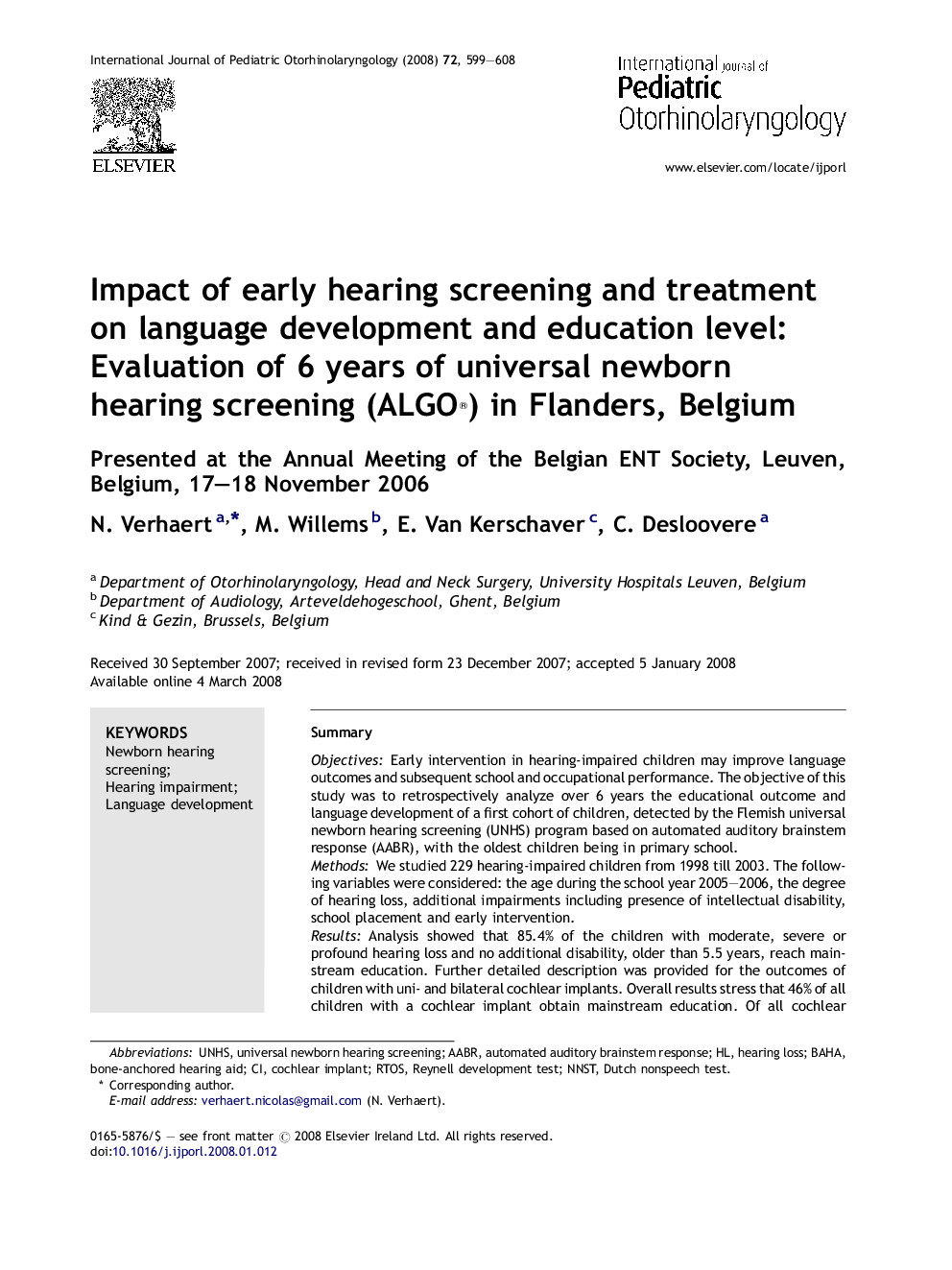| کد مقاله | کد نشریه | سال انتشار | مقاله انگلیسی | نسخه تمام متن |
|---|---|---|---|---|
| 4114624 | 1606083 | 2008 | 10 صفحه PDF | دانلود رایگان |

SummaryObjectivesEarly intervention in hearing-impaired children may improve language outcomes and subsequent school and occupational performance. The objective of this study was to retrospectively analyze over 6 years the educational outcome and language development of a first cohort of children, detected by the Flemish universal newborn hearing screening (UNHS) program based on automated auditory brainstem response (AABR), with the oldest children being in primary school.MethodsWe studied 229 hearing-impaired children from 1998 till 2003. The following variables were considered: the age during the school year 2005–2006, the degree of hearing loss, additional impairments including presence of intellectual disability, school placement and early intervention.ResultsAnalysis showed that 85.4% of the children with moderate, severe or profound hearing loss and no additional disability, older than 5.5 years, reach mainstream education. Further detailed description was provided for the outcomes of children with uni- and bilateral cochlear implants. Overall results stress that 46% of all children with a cochlear implant obtain mainstream education. Of all cochlear implant (CI) children above 5.5 years, without additional handicaps, 78.9% of children attend primary mainstream school. Data on language development show that up to 45% of the children with unilateral cochlear implant and no additional disabilities had normal to slight delay on language development.These data are fulfilling the goals stated by the JCIH and the American Academy of Pediatrics (AAP) in 2000. The role and impact of additional handicaps is discussed. The importance of early hearing loss identification and hearing therapy for appropriate language development is highlighted. Finally our preliminary results on children with bilateral cochlear implants without additional handicaps present an improved language development in comparison to unilateral CI-children.ConclusionA vast majority of the children detected by the UNHS program, with moderate, severe or profound hearing loss and no additional disability, older than 5.5 years, reach mainstream education. Additional disabilities have a major influence.
Journal: International Journal of Pediatric Otorhinolaryngology - Volume 72, Issue 5, May 2008, Pages 599–608